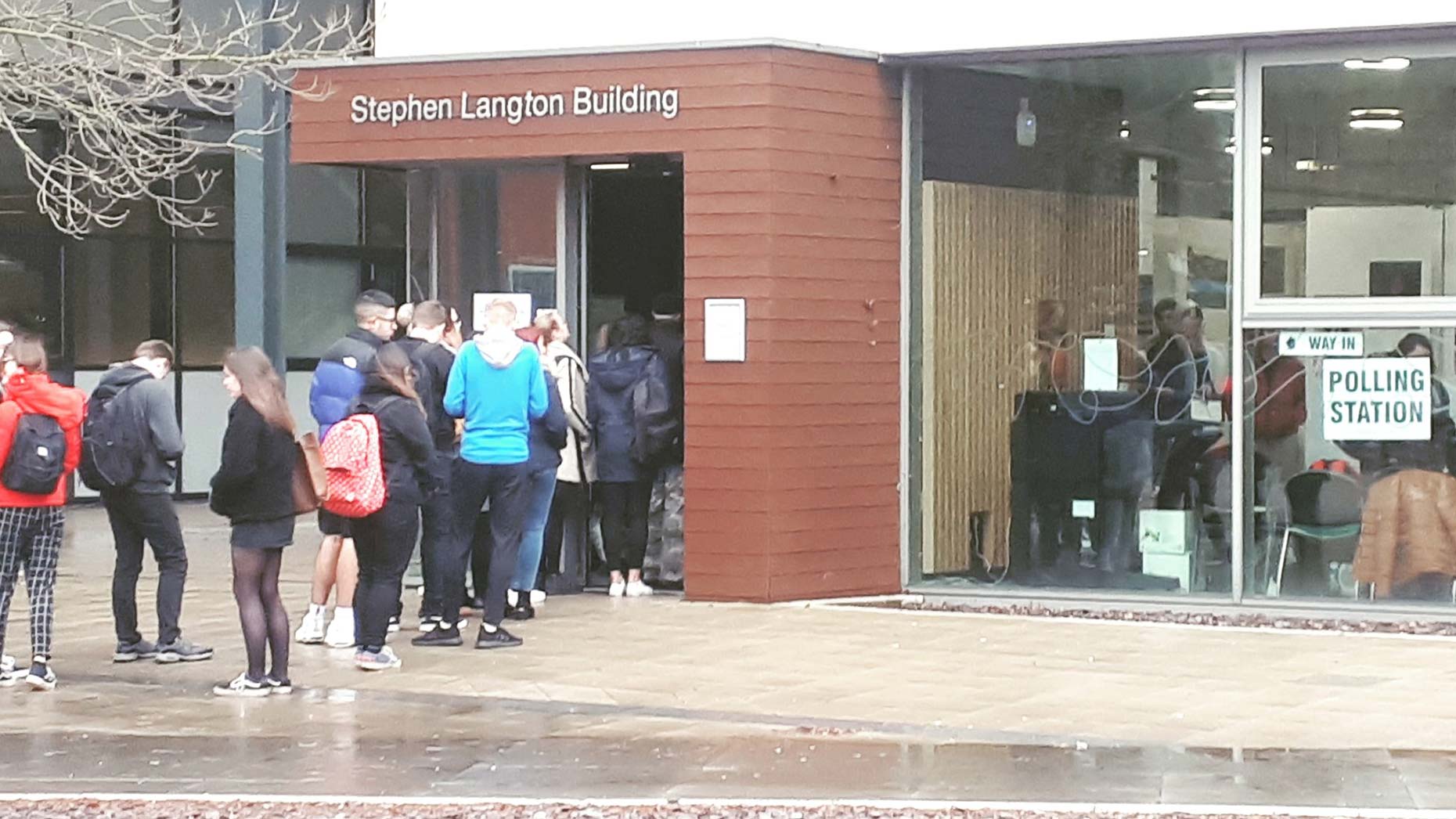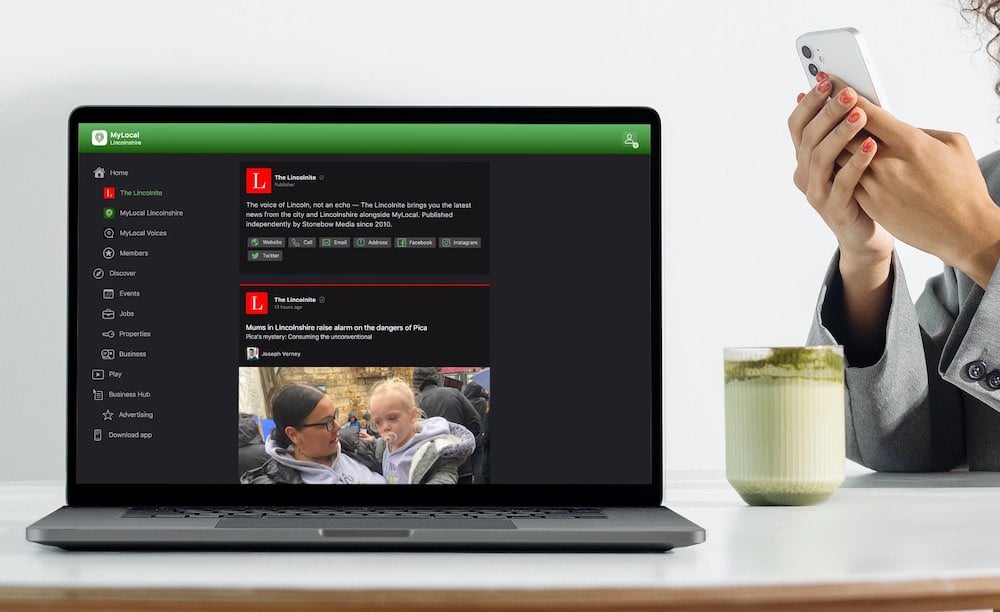Almost two months into the coronavirus pandemic in Lincolnshire, we know three official stats as of April 17:
- There have been 551 people who tested positive for COVID-19
- Sadly, 70 people died after contracting coronavirus
- Over 120 patients have been discharged from local hospitals after COVID-19 treatment
There are many caveats to these numbers, which we’ll go into a bit later, but they are official stats nonetheless. So what can these figures tell us if we were to interpret them on their own merit? A few interesting things actually.
COVID-19 has a 12.7% mortality rate in Lincolnshire
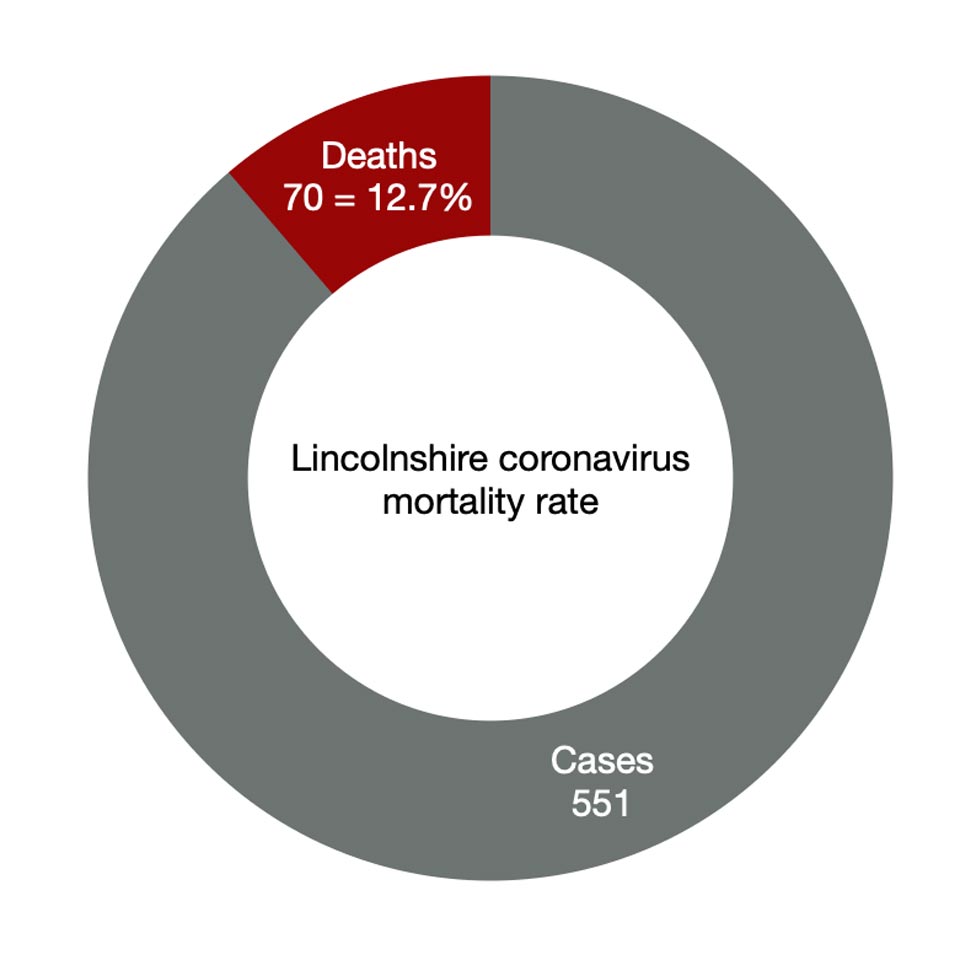
Data: NHS/ULHT Chart: The Lincolnite
Because we know 70 people died with coronavirus in Lincolnshire, out of a total of 551 cases, this would mean that COVID-19 has a 12.7% mortality rate in our region, which matches the national average, as well as Italy’s, but is more than four times Germany’s 3%.
The caveat here is that care homes and at home deaths are not always counted in the official stats, so the number could be realistically higher. However, the total number of cases could be much higher too, since the majority of testing has been done in hospitals only, and staff tests numbers are included as well. This could actually mean that the mortality rate is lower, even when considering the unrecorded deaths.
North and North East Lincolnshire record their numbers separately from Lincolnshire. They have a total of 243 cases and recorded 31 deaths, meaning the mortality rate there is also 12.7%.
People have a 37% chance of dying in hospital with coronavirus
or a 63% chance of recovering from COVID-19 after hospital treatment

Data: NHS/ULHT Chart: The Lincolnite
ULHT says that more than 120 people were discharged from its hospitals after recovering from coronavirus. The youngest patient was just one year old, while the most senior was 101 years old. The Lincolnshire hospitals trust don’t say how many people have had treatment in total or how many are now in its hospitals. However, since we know the number of total cases, this could mean that a third (37%) of people who required hospital treatment died with COVID-19, while two thirds recovered (63%).
26% of people with coronavirus required hospital treatment, but 74% didn’t
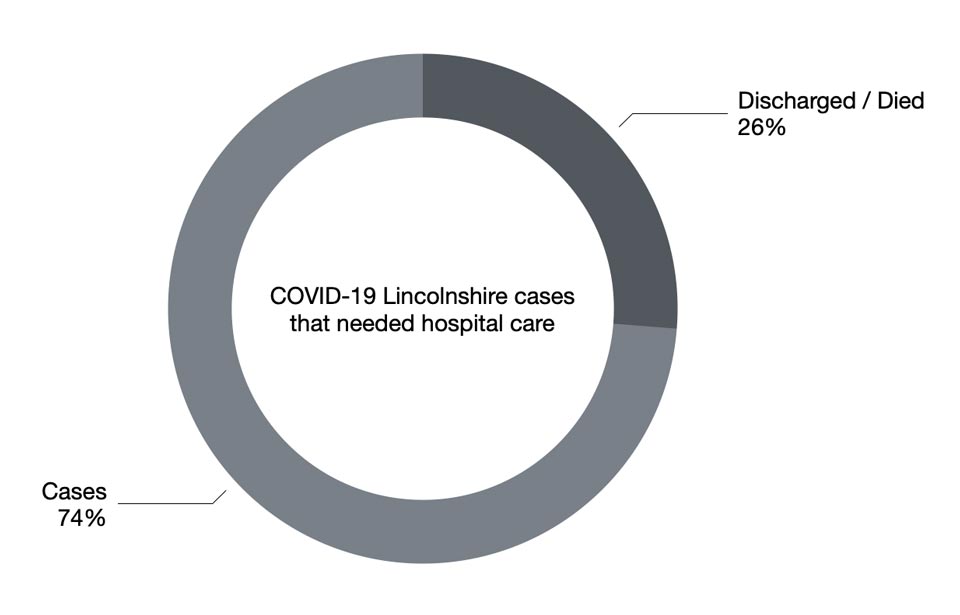
Data: NHS/ULHT Chart: The Lincolnite
We know that patient zero in Lincolnshire recovered at home and didn’t need a hospital stay, which is the case for most people, if these stats are any indication — 26% of people with coronavirus required medical attention, but 74% of people pulled through without such a need. The caveats relating to the total case numbers and hospital discharges apply in this instance as well.
The elderly and ill are the worst affected
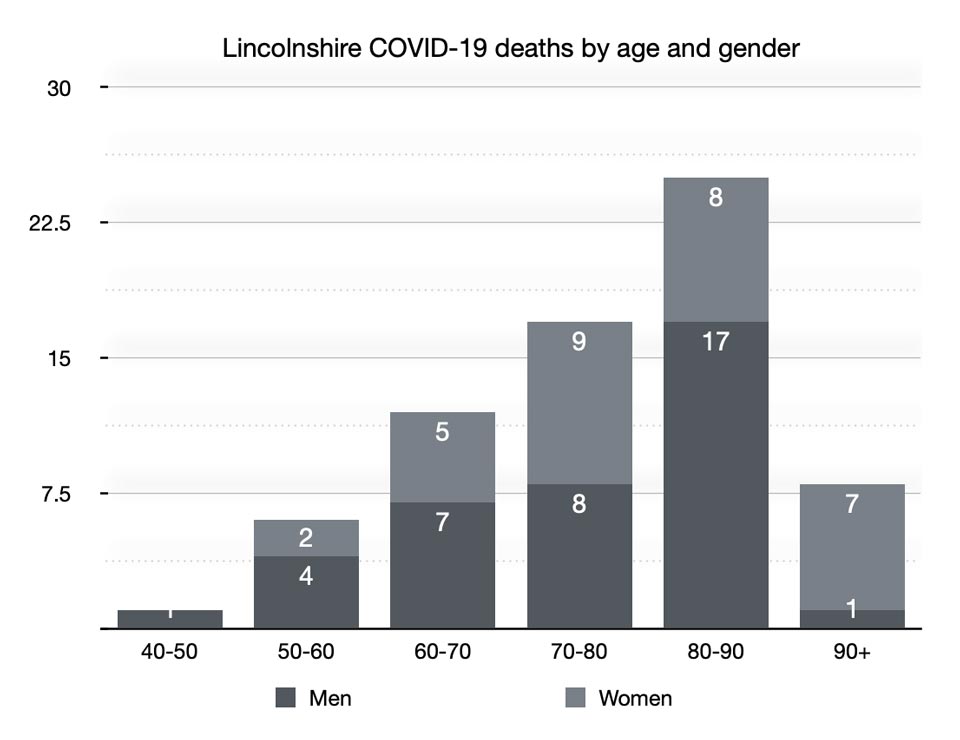
Data: NHS/ULHT Chart: The Lincolnite
It’s widely known that coronavirus can be fatal to most older people and those with underlying health conditions, and in Lincolnshire it’s no different. All of the 69 patients who died with COVID-19 in our region had underlying health conditions, the local hospitals trust says (although nationally younger people with no known health conditions have died too). The youngest was 49 and the oldest was a woman aged 92. The first Lincolnshire death was recorded on March 26, a woman in her 80s.

Data: NHS/ULHT Table: The Lincolnite
ULHT reports daily the ages and genders of those who died with COVID-19, but the stats sometimes have references such as “five women aged between 63 and 97,” so for the purposes of our chart above, we had to split and estimate in those cases where it wasn’t very clear, but this didn’t impact the overall conclusion that people over 60 are most vulnerable to coronavirus, especially if they already have health problems.
— Additional reporting by Calvin Robinson
We have put these numbers to health bosses in Lincolnshire and will follow-up if and when they reply.






